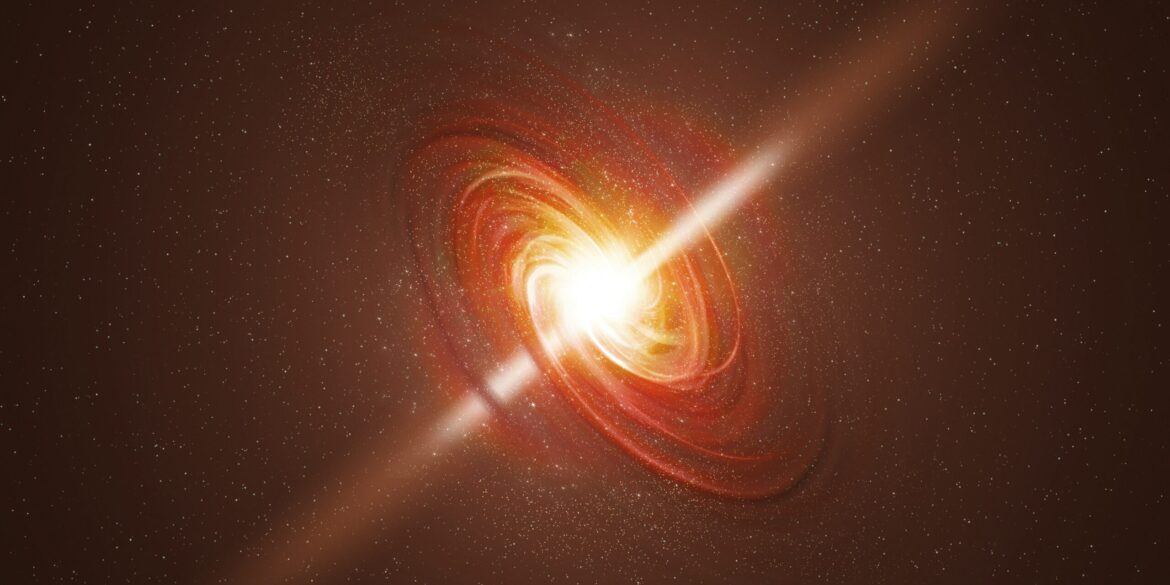On November 16, 2025, a team of researchers from Japan’s RIKEN Center for Interdisciplinary Theoretical and Mathematical Sciences, in collaboration with the University of Tokyo and the Universitat de Barcelona in Spain, announced a major breakthrough in computational astrophysics. They had successfully created the first-ever simulation of a galaxy that tracks over 100 billion individual stars. This milestone in astrophysical simulation was made possible by combining cutting-edge deep learning techniques with high-resolution physics modeling, resulting in a simulation that is not only unprecedented in scale but also significantly faster than traditional methods.
Traditionally, simulating an entire galaxy at such a massive scale has been an extraordinarily difficult task. Galaxy simulations rely on complex physical modeling, taking into account interactions between stars, gas, dust, and dark matter, among other factors. For these simulations to be truly representative of the complexities of galactic evolution, they must include small-scale phenomena such as supernova explosions and the distribution of gases following these explosive events. Modeling these small-scale processes in a galactic context, however, has always been computationally prohibitive due to the immense number of calculations required.
Read Also: https://goodmorningus.com/bizpros-revolutionizing-clinic-communication-with-voice-ai/
The researchers’ breakthrough lay in integrating artificial intelligence (AI) into the simulation process. By training deep-learning models on the results of high-resolution simulations of supernova events, the AI was able to approximate how gas behaves following these explosions. This AI-powered module allowed the team to simulate galaxy evolution at an astonishing speed, dramatically improving both the resolution and the efficiency of the model. In essence, the AI approximated the complex dynamics of gas dynamics, which traditionally would take immense computational power and time to model. This innovation made it possible to track the individual behavior of more than 100 billion stars, a scale previously unimaginable in astrophysical simulations.
The simulation is not just faster—it is also vastly more detailed. Previous simulations of galaxy-scale systems typically tracked a much smaller number of stars, often leaving out some of the finer-scale physical processes that shape the dynamics of galaxies. By leveraging AI, the research team achieved a significant leap in both speed and scale, creating a model that is more accurate and provides far more granular insights into the formation and evolution of galaxies. In practical terms, this means that what would have previously taken hundreds of hours of computing time to simulate the evolution of a galaxy for just one million years can now be completed in a matter of hours. This efficiency opens the door to simulating the evolution of galaxies over billions of years in just a fraction of the time.
This breakthrough has far-reaching implications for the study of the Milky Way and other similar galaxies. The simulation allows scientists to study the formation of galactic structures like the central bulge, disk, and spiral arms, as well as the distribution of stars, gas, and dark matter. It also enables researchers to track the movement of stars over time, observe the role of supernovae in shaping the galaxy, and gain deeper insights into the chemical evolution of galaxies. Understanding these processes in greater detail could help scientists answer long-standing questions about how galaxies form, evolve, and interact with their environments.
One of the most promising aspects of the simulation is its potential to enhance our understanding of the Milky Way’s evolution. By tracking the movement and behavior of individual stars, scientists can gain insights into the mechanisms behind star formation, the dispersal of heavy elements produced in supernovae, and the dynamics of our galaxy’s spiral structure. These insights could also have important implications for understanding the broader universe, including the formation of other galaxies and the processes that govern the lifecycle of cosmic structures.
The AI-enhanced simulation also represents a broader shift in scientific modeling. The integration of deep learning techniques into physics-based simulations opens up new possibilities for fields beyond astrophysics, including climate science, oceanography, and meteorology. In these fields, complex, multi-scale processes—such as atmospheric circulation, ocean currents, and climate feedback loops—pose similar computational challenges to those found in astrophysical simulations. The success of AI in this context suggests that similar approaches could revolutionize how researchers tackle problems in these other disciplines, potentially enabling faster, more accurate predictions and insights.
While the breakthrough is undoubtedly a major advancement, the researchers emphasize that it is not the final word on galactic modeling. The team acknowledges that the AI-powered approach still requires validation against observational data, and there are challenges in refining the surrogate models used to approximate small-scale physical processes. Extending the simulations to longer timeframes and incorporating even more detailed physical phenomena will remain a challenge. However, the team is optimistic that this new methodology will continue to evolve and lead to further breakthroughs in astrophysical modeling and beyond.
In conclusion, the successful simulation of 100 billion stars using AI represents a transformative moment in the field of astrophysics. By combining high-resolution physics-based models with deep learning techniques, scientists have created a simulation that is not only faster and more detailed but also capable of providing unprecedented insights into the formation and evolution of galaxies. As this approach is refined and expanded, it promises to open new avenues for scientific discovery, not only in astrophysics but also in other disciplines grappling with complex, multi-scale systems. The implications of this work are profound, offering a deeper understanding of the universe’s largest structures and paving the way for more rapid and accurate simulations of complex phenomena in a variety of scientific fields.

